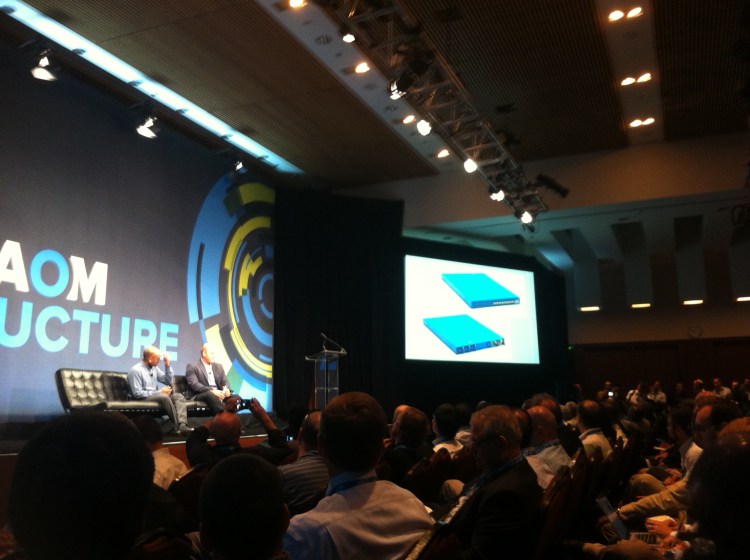SAN FRANCISCO — Today’s data center networking gear doesn’t cut it for Facebook.
The social networking company has designed a modular top-of-rack switch — clad, typically, in Facebook blue — and associated software that together will be able to handle lots of different workloads as the company diversifies with more and more applications.
Jay Parikh, the company’s vice president of infrastructure engineering, talked about the project, dubbed Wedge, and showed a few pictures during an interview at Gigaom’s Structure conference today.
“We think this is going to give us sort of better focus, but also better flexibility in how we build our infrastructure,” Parikh said.
See how software-defined networking is changing the networking switch ecosystem
(VB Intel report by Scott Raynovich)
Facebook has done a lot to optimize its hardware, software, and facilities since starting the Open Compute Project three years ago.
The work on software and hardware has saved $1.2 billion, Parikh has said in the past.
Last year Facebook went further. Hardware vendors came up with specs for networking switches for the Open Compute Project, and Facebook tested the switches in its labs. But now Facebook has gone many steps further and devised a design that exactly meets its needs.
The 40-Gigabit switch Parikh showed today has 16 slots for Ethernet cables that can beam down 10-Gigabit connection to each server. The idea is to expand the switch to 32 ports. The switch also contains an Open Compute Project Group Hug board packing an Intel chip.
That board, Parikh said, is key.
“As we see it as software engineers, it turns it [the switch] into another server,” he said. “This is no longer a switch as we think about building our infrastructure. It is just a server.”
The box can boot Facebook’s Linux distribution and Facebook’s code for doing monitoring and configuration.
And because the switch contains modular elements, it’s possible to swap out components as Facebook prioritizes different kinds of workloads. And they can easily run different software on the switch, too.
“We’ll be able to build [software] modules for handling things like VR [virtual reality[ or messaging or deep learning,” Parikh said.
Eventually, Parikh said, the design will enter the Open Compute Project, so others can dip in and come up with their own flavors of the switch. Perhaps, for example, a company — even Facebook itself — could throw in an ARM-based chip, rather than an Intel chip. Or they could paint the box in some other color, by working with hardware partners.
These efforts should help Facebook meet goals for agility and cost. But it could well help others.
“We want to maximize innovation,” Parikh said.
VentureBeat's mission is to be a digital town square for technical decision-makers to gain knowledge about transformative enterprise technology and transact. Learn More

